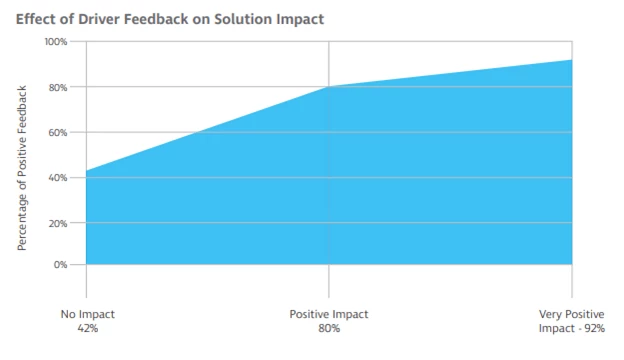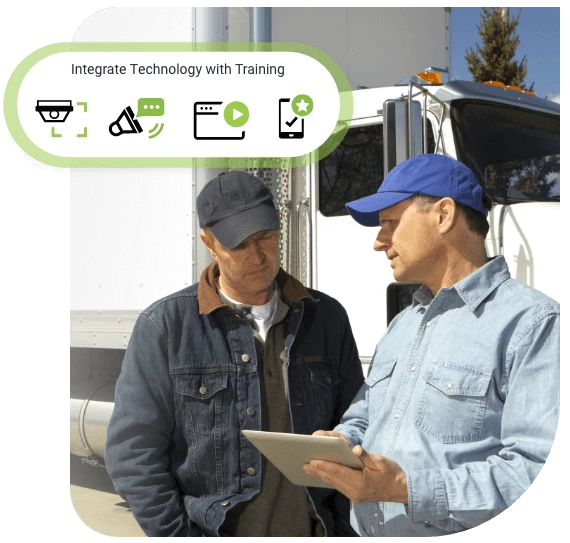Key Takeaways
Distracted driving is a major concern for fleet managers and in our 2025 Global Distracted Driving Report it was revealed that 70% of businesses had been affected by distracted driving. A wide range of technologies are being used, including telematics and dashcams, but success hinges on careful planning and active driver engagement. Here's how to effectively deploy and utilize technology to combat distracted driving while encouraging collaboration.
Table of Contents
- How to Implement Technology to Prevent Distracted Driving
- How to Use Technology to Support Positive Outcomes
- Build a Safer Future by Eliminating Distractions
How to Implement Technology to Prevent Distracted Driving
Distracted driving poses significant challenges for fleet managers and drivers, requiring a clear understanding of the problem and solutions. A practical approach to implementation involves assessing the issue, selecting the right tools, and engaging drivers from the outset to facilitate early adoption and support long-term success.
Assess the Problem
Before implementing technology, fleet managers must identify the key distractions in their operations. Surveys and telematics data can reveal common behaviors, such as mobile phone use (a factor in 68% of incidents), external distractions, or stress. Understanding these patterns allows businesses to select targeted solutions for maximum impact.
Choose the Right Technology
The right tools can make all the difference. Technologies such as driver-facing and forward-facing, phone-blocking apps, and digital coaching solutions are highly effective. For example, driver-facing cameras can address mobile phone use, while coaching software provides actionable insights to improve habits over time. Pairing these tools with telematics systems ensures comprehensive monitoring and feedback.
Involve Drivers Early
Driver buy-in is essential for success. Engaging drivers from the start—through focus groups or surveys—ensures their concerns are heard and addressed. According to the Global Distracted Driving Report, 92% of solutions delivering "very positive" results were backed by strong driver approval. This approach builds trust and creates a partnership between drivers and management, making them more receptive to new tools.

Communicating the Benefits
Clear communication is key. Emphasize how technology protects drivers and supports their well-being. For instance, reducing distractions improves safety and helps drivers stay focused on the road, minimizing the risk of accidents. Explain how these tools mitigate operational disruptions and costs, aligning with both individual and company goals.
Plan a Phased Rollout
Avoid overwhelming your team with sudden changes. Start with a pilot program, using a small group of drivers to test and refine the technology. Collect feedback to make necessary adjustments before deploying the solution fleet-wide. A phased rollout ensures a smoother transition and higher adoption rates.

How to Use Technology to Support Positive Outcomes
Technology adoption only succeeds when paired with effective practices. Success comes from seamlessly integrating tools into workflows, providing actionable driver feedback, celebrating milestones, and supporting ongoing engagement. These steps allow for sustained improvement and long-term benefits.
Integrate Technology with Training
Technology alone cannot solve distracted driving. Pair tools with comprehensive coaching programs to maximize effectiveness. Training sessions can use real-world data from telematics and cameras to address risky behaviors like speeding or phone use. This integrated approach reinforces good habits and promotes a culture of safety.
Provide Real-Time Feedback
Immediate feedback helps drivers adjust their behaviors on the spot. Many telematics solutions offer in-cab alerts for actions like harsh braking or excessive idling. Driver scorecards provide a detailed overview of performance trends, making it easier for drivers to identify areas for improvement and work toward specific goals.
Celebrating Success
Recognizing and rewarding safe driving behaviors can significantly boost morale and engagement. Consider implementing incentive programs or gamification strategies, such as awarding points for maintaining distraction-free driving. Highlighting success stories within your team further reinforces the value of the technology and motivates others to adopt similar practices.
Ensure Ongoing Engagement
Continual engagement is critical to long-term success. Review performance data regularly with drivers to celebrate progress and identify opportunities for growth. Solicit feedback to understand what's working and what needs improvement, ensuring the technology evolves alongside your team's needs.
Evaluating Impact and Expand
Track metrics such as reduced distracted driving incidents, improved driver satisfaction, and lower costs to assess the technology’s impact. Use these insights to refine your strategy and consider introducing complementary tools, such as advanced driver-assistance systems or enhanced route optimization software. Expanding your approach incrementally ensures sustained improvements.
Promote Safe Driving Practices
Minimize risk and keep your drivers safe with effective driver behavior monitoring solutions.
Build a Safer Future by Eliminating Distractions
Addressing distracted driving is both a safety priority and a business imperative. By implementing technology thoughtfully and engaging drivers throughout the process, fleet managers can reduce risks, lower costs, and create a more safety-focused company culture. With tools like dashcams , coaching software, and a commitment to positive driver feedback, businesses can create lasting change on the road.

